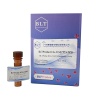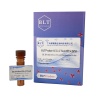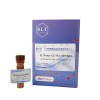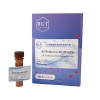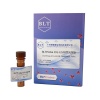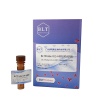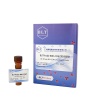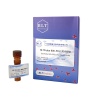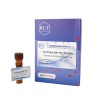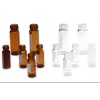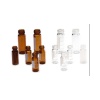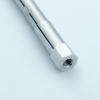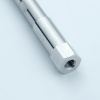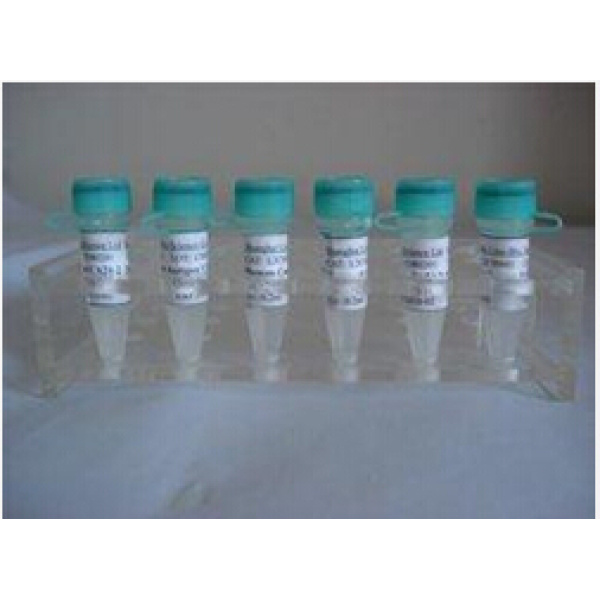找不到产品?留下需求帮您找
一键询价-
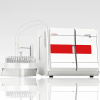 德国耶拿 multi N/C 3100 TOC总有机碳/总氮分析仪型号: multi N/C 3100
德国耶拿 multi N/C 3100 TOC总有机碳/总氮分析仪型号: multi N/C 3100 -
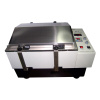 宏华仪器SHA-C数显水浴恒温振荡器型号: SHA-C
宏华仪器SHA-C数显水浴恒温振荡器型号: SHA-C -
 Hitachi日立CT15RE台式离心机型号: CT15RE
Hitachi日立CT15RE台式离心机型号: CT15RE -
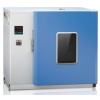 电热鼓风干燥箱型号: CS101-ABN
电热鼓风干燥箱型号: CS101-ABN -
 Agilent GC 8890 气相色谱系统型号: 8890 GC
Agilent GC 8890 气相色谱系统型号: 8890 GC -
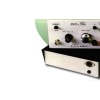 瑞沃德 - 隔离器[ISO-FLEX]型号: 隔离器
瑞沃德 - 隔离器[ISO-FLEX]型号: 隔离器 -
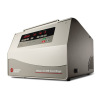 贝克曼库尔特Allegra X-30R 台式冷冻离心机型号: Allegra X-30R
贝克曼库尔特Allegra X-30R 台式冷冻离心机型号: Allegra X-30R -
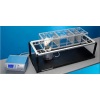 Ugo Basile动态足底触觉仪,足底触觉测试仪型号: Ugo Basile动态足底触觉仪,足底触觉测试仪
Ugo Basile动态足底触觉仪,足底触觉测试仪型号: Ugo Basile动态足底触觉仪,足底触觉测试仪 -
 体积式3D生物打印机型号: Tomolite
体积式3D生物打印机型号: Tomolite -
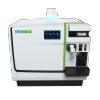 珀金埃尔默PerkinElmer NexION 1100/1000G ICP-MS型号: NexION 1100/1000G ICP-MS
珀金埃尔默PerkinElmer NexION 1100/1000G ICP-MS型号: NexION 1100/1000G ICP-MS
英文名称 Torsin A
中文名称 扭转蛋白A抗体
别 名 DQ2; Dystonia 1; Dystonia 1 protein; Dyt1; Tor1a; Torsin A; Torsin family 1 member A; TOR1A_HUMAN.
扭转蛋白A抗体
说 明 书 0.2ml
研究领域 细胞生物 神经生物学
抗体来源 Rabbit
克隆类型 Polyclonal
交叉反应 Human, Mouse, Rat, Dog, Pig, Cow,
产品应用 WB=1:100-500 ELISA=1:500-1000 IHC-P=1:100-500 IHC-F=1:100-500 ICC=1:100-500 IF=1:100-500 (石蜡切片需做抗原修复)
not yet tested in other applications.
optimal dilutions/concentrations should be determined by the end user.
分 子 量 35kDa
细胞定位 细胞核 细胞浆 细胞膜
性 状 Lyophilized or Liquid
浓 度 1mg/1ml
免 疫 原 KLH conjugated synthetic peptide derived from human Torsin A
亚 型 IgG
纯化方法 affinity purified by Protein A
储 存 液 Preservative: 15mM Sodium Azide, Constituents: 1% BSA, 0.01M PBS, pH 7.4
保存条件 Store at -20 °C for one year. Avoid repeated freeze/thaw cycles. The lyophilized antibody is stable at room temperature for at least one month and for greater than a year when kept at -20°C. When reconstituted in sterile pH 7.4 0.01M PBS or diluent of antibody the antibody is stable for at least two weeks at 2-4 °C.
扭转蛋白A抗体 产品介绍 background:
A mutation of the DYT1 gene, which codes for TorsinA, has been identified as the cause of one form of autosomal dominantly inherited dystonia. Early-onset torsion dystonia is a movement disorder, characterized by twisting muscle contractures, that begins in childhood. Symptoms are believed to result from altered neuronal communication in the basal ganglia. TorsinA comprises 332 amino acids. TorsinA is widely expressed throughout the mouse central nervous system and is detected in the majority of neurons in nearly all regions. The proteins display cytoplasmic distribution, although in some types of neurons localization is perinuclear. TorsinA often performs chaperone-like functions that assist in the assembly, operation, or dis-assembly of protein complexes. The gene which encodes TorsinA has high homology to three additional mammalian genes and a nematode gene and distal similarity to the family of heat-shock proteins and the Clp protease family. The gene which encodes TorsinA maps to human chromosome 9q34.
Function:
May serve as a molecular chaperone assisting in the proper folding of secreted and/or membrane proteins. In the nucleus, displaces the nuclear membrane proteins SUN2, SYNE2 and nesprin-3/C14orf49, leaving nuclear pores and SUN1 unchanged.
Subunit:
May form homohexamers. Interacts with TOR1AIP1 and TOR1AIP2. Interacts with KLHL14, preferentially when ATP-free.
Subcellular Location:
Endoplasmic reticulum lumen. Nucleus membrane. Note=Mainly located in the lumen of the endoplasmic reticulum. The association with nuclear envelope is mediated by the interaction with TOR1AIP2. The Glu-303 del variant is lumenally-oriented in discrete large spheroid intracellular structures rather than in the endoplasmic reticulum.
Tissue Specificity:
Widely expressed. Highest levels in kidney and liver. Not detected in spleen. In the brain, high levels found in the dopaminergic neurons of the substantia nigra pars compacta, as well as in the neocortex, hippocampus and cerebellum. Also high expression in the spinal cord.
DISEASE:
Defects in TOR1A are the cause of dystonia type 1 (DYT1) [MIM:128100]. DYT1 is a primary torsion dystonia, and the most common and severe form. Dystonia is defined by the presence of sustained involuntary muscle contractions, often leading to abnormal postures. DYT1 is characterized by involuntary, repetitive, sustained muscle contractions or postures involving one or more sites of the body, in the absence of other neurological symptoms. Typically, symptoms develop first in an arm or leg in middle to late childhood and progress in approximately 30% of patients to other body regions (generalized dystonia) within about five years. 'Torsion' refers to the twisting nature of body movements observed in DYT1, often affecting the trunk. Distribution and severity of symptoms vary widely between affected individuals, ranging from mild focal dystonia to severe generalized dystonia, even within families.
Similarity:
Belongs to the clpA/clpB family. Torsin subfamily.
Important Note:
This product as supplied is intended for research use only, not for use in human, therapeutic or diagnostic applications.
扭转蛋白A抗体
hz-9223R RNF70 环指蛋白70抗体
hz-9224R RNF41 环指蛋白41抗体
hz-9225R RNF14 环指蛋白14抗体
hz-9226R RNF157 环指蛋白157抗体
hz-9227R RNF144 E3泛素蛋白连接酶144A抗体
hz-9228R RNF149 环指蛋白149抗体
hz-9229R RNF156 环指蛋白156抗体
hz-9230R RNF158 心脏蛋白磷酸酶1结合蛋白/环指蛋白158抗体
hz-9231R RNF166 环指蛋白166抗体
hz-9232R RNF167 环指蛋白167抗体
hz-9233R RNF180 环指蛋白180抗体
hz-9234R CREG1 E1A激活基因刺激蛋白1抗体
hz-9235R CDX1 尾侧型同源转录因子1抗体
hz-9236R CDX2/3 尾侧型同源转录因子2/3抗体
hz-9237R RNF35 环指蛋白35抗体
hz-9238R RNF23 环指蛋白23抗体
hz-9239R RNF24 环指蛋白24抗体
hz-9240R RNF25 环指蛋白25抗体
hz-9241R RNF31/HOIP 环指蛋白31抗体
hz-9242R RNF34 环指蛋白34抗体
hz-9243R RNF20 环指蛋白20抗体
hz-9244R RNF21 环指蛋白21抗体
hz-9245R RNF190 环指蛋白190抗体
hz-9246R RNF19B 环指蛋白19B抗体
hz-9247R RNF111 环指蛋白111抗体
hz-9248R RNF113A 环指蛋白113A抗体
hz-9249R RNF123 环指蛋白123抗体
hz-9250R TRAC1/RNF125 环指蛋白125抗体
hz-9251R RNF128 环指蛋白128抗体
hz-9252R RNF130/ 环指蛋白130抗体
hz-9253R RNF133 环指蛋白133抗体
hz-9254R RNF138 环指蛋白138抗体


